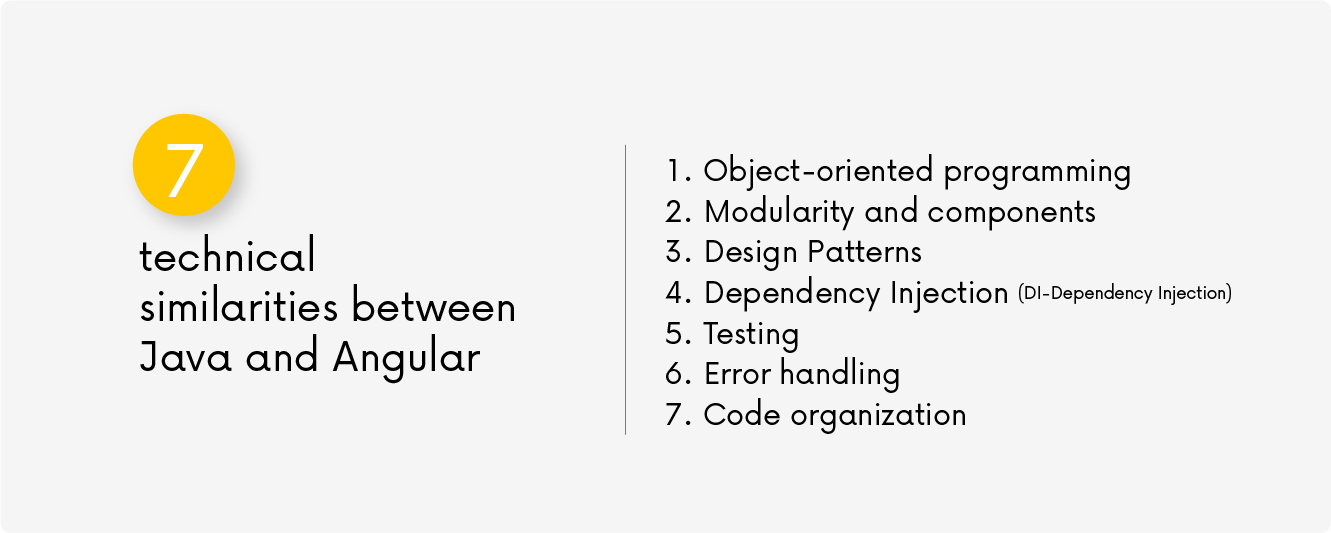
Table of Contents
What is Java?
Java is a widely used object-oriented programming language. It is used to develop web and mobile applications, operating systems, embedded systems, real-time software, data mining, cloud computing, cryptography, and scientific applications – in almost every field. Java’s basic features include:- Syntax and functions: Java is a strongly typed language. When writing code, each type of function must be declared. It provides the basic syntax and functions of the language, including classes, objects, inheritance, polymorphism, and much more.
- Standard library: Java includes a standard library that provides various APIs and packages for common programming tasks, such as input/output handling and networking.
- Platform independence: Java code is compiled into byte code that runs on the Java Virtual Machine (JVM), making it platform-independent. A key feature of Java is the “write once, run anywhere” function.
- Stability: Java is not the most efficient regarding resource requirements. Still, it is stable because of its understandable and structured code. It works with an SQL database when processing large amounts of data, such as industrial or commercial.
What is Angular?
Angular is a framework built on JavaScript and developed by Google. It is used to create complex user interfaces. It greatly simplifies the process of creating interactive web applications. Whether you’re building a dynamic dashboard or a responsive e-commerce site, Angular’s component-based architecture and declarative templates allow you to easily make a specific design a reality. Comparably, two-way data binding ensures that changes to the user interface are immediately reflected in the underlying data, offering users a seamless experience. We can compare the versatility of Angular with Spring Framework in Java or ASP.NET in C# – it includes all the tools needed to create applications. From implementing components, handling HTTP requests to some back-end services, adding a translation layer for different languages, implementing forms and routing with authentication, and testing the application, it is a well-structured tool that will handle most of the functions you would want to build on the front-end side because it:- Has its own security model; you don’t have to write it yourself,
- Has its own memory module for caching data,
- You can create a database for yourself on the front-end,
- You can make a responsive app that supports an offline mode and scales to different devices (the idea is to display on different devices, e.g., phones, tablets, laptops) and much more.
Why are Java and Angular the perfect interaction?
Java-developed applications are known for their robustness, safety, better server-side programming, and other middleware services. Still, they lack a good presentation part. Introduction Angular and its easy integration with Java frameworks, such as Spring Boot, make a Java application with a user interface. Angular works very well with Java or .net. They have compatible design philosophies. Both are typed, versatile, and asynchronous. Java and Angular are great for complex applications. Suppose a customized administrative interface is created, and large amounts of data must be processed quickly and reliably. In that case, we consistently rely on Java Spring Boot with an Angular interface. This combination is also helpful for transmitting data through REST interfaces and connecting different systems and data sources with a suitable user interface, enabling friendly data management or high personalization.7 technical similarities between Java and Angular
Although Java and Angular are two different technologies, serving different purposes in the software development process, several concepts can be applied in both contexts:1. Object-oriented programming
Java: Java is a popular object-oriented programming language that emphasizes the use of classes, objects, inheritance, and polymorphism (allowing you to reduce the complexity of a program by having the same interface define a generic set of actions). Angular: Although not a programming language per se, Angular applications are developed using TypeScript, which supports object-oriented programming concepts. Angular components and services can be organized in an object-oriented manner.2. Modularity and components
Java: Java applications can consist of modules using packages and classes, allowing reuse. Angular: Angular promotes the creation of modular applications through components, services, and modules. Components encapsulate user interface and behavior; services handle business logic, and modules group related functions.3. Design Patterns
Java: Java applications often use design patterns such as Singleton, Factory, Observer, and MVC (Model-View-Controller). Angular: Angular applications also use design patterns, including the Component pattern for the user interface, the Service pattern for shared logic, and the Observer pattern for event handling.4. Dependency Injection (DI-Dependency Injection).
Java: Dependency injection is a basic concept in Java in which objects are injected into other objects, promoting loose connections and ease of testing. Angular: Angular extensively uses dependency injection, allowing dependencies to be injected into components, services, and other classes. This affects modularity and testing.5. Testing
Java: Java applications can be tested using tools such as JUnit and TestNG, which offer various testing options such as unit testing, annotation, parameter testing, unit testing, functional testing, and more. Angular: Angular applications are tested using tools such as Jasmine (for unit testing) and Protractor (for end-to-end testing).6. Error handling
Java: Java provides exception-handling mechanisms to catch and manage errors and exceptions at runtime. These include try-catch, throwings, finally, try-with-resources, and custom exception classes. Angular: Angular applications handle errors through mechanisms such as error handling in HTTP requests or using RxJS Observables to manage asynchronous operations.7. Code organization
Java: Java applications use a package structure to organize classes and promote logical separation of components. Angular: Angular applications have a similar organization with folders for components, services, modules, and other resources. Although Java and Angular support different parts of the application stack, developers can apply some common concepts, design patterns, and best practices to maintain code consistency and quality in back-end and front-end work.
7 similarities between Java and Angular in software development
What is the importance of tech-stack Java + Angular for your development team?
Building an app with Angular and Java Spring Boot is a good fit for modern software development because of their complementary strengths and benefits. A developer’s time and effort are priceless, and the Java-Angular combination is not just about writing code but also optimizing workflows. With these tools, you will get:- Faster development: Separating issues between front-end and back-end allows the development team to work simultaneously, accelerating the development process.
- Less repetition: Reusing Java code and Angular components saves time and maintains consistency throughout the application.
- Scalability: Using the robustness of Java and the modular structure of Angular, you will create applications that grow with your user base.
- Easy maintenance: Changes to one part of the application will not affect the entire system, making updates smoother and easier to manage.
- Rich support: The thriving Java and Angular communities provide resources, documentation, and a network of other developers to build on.












